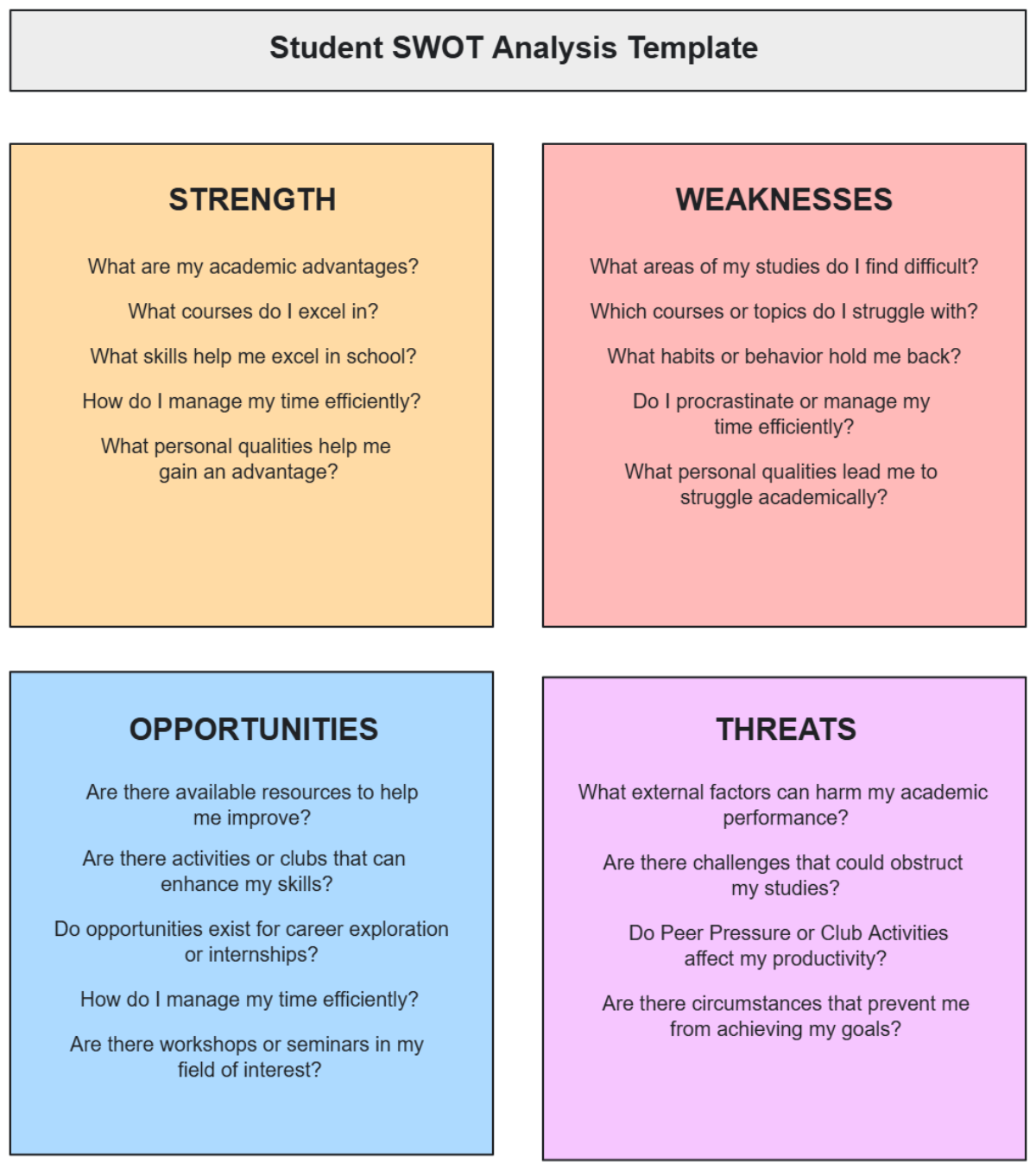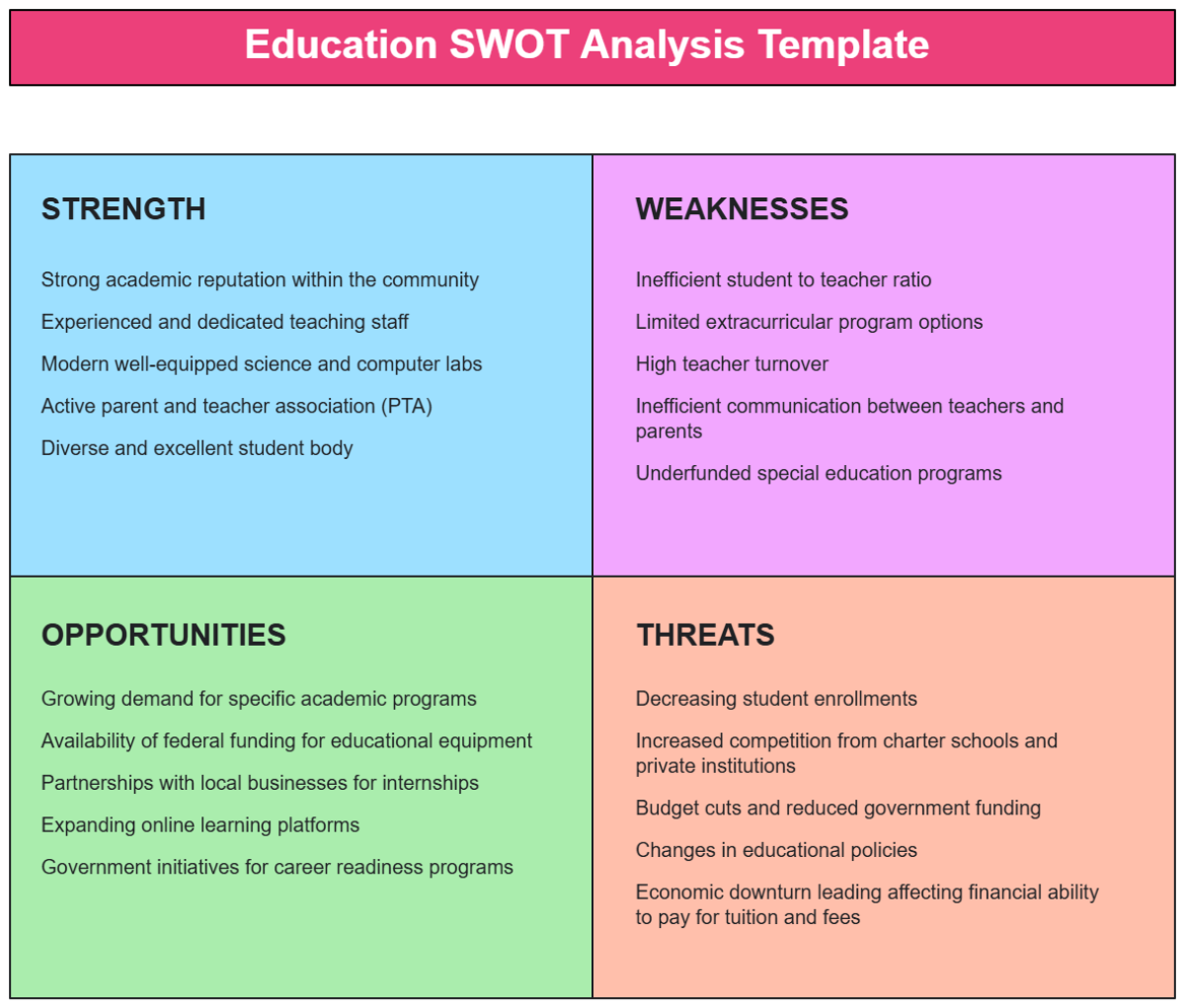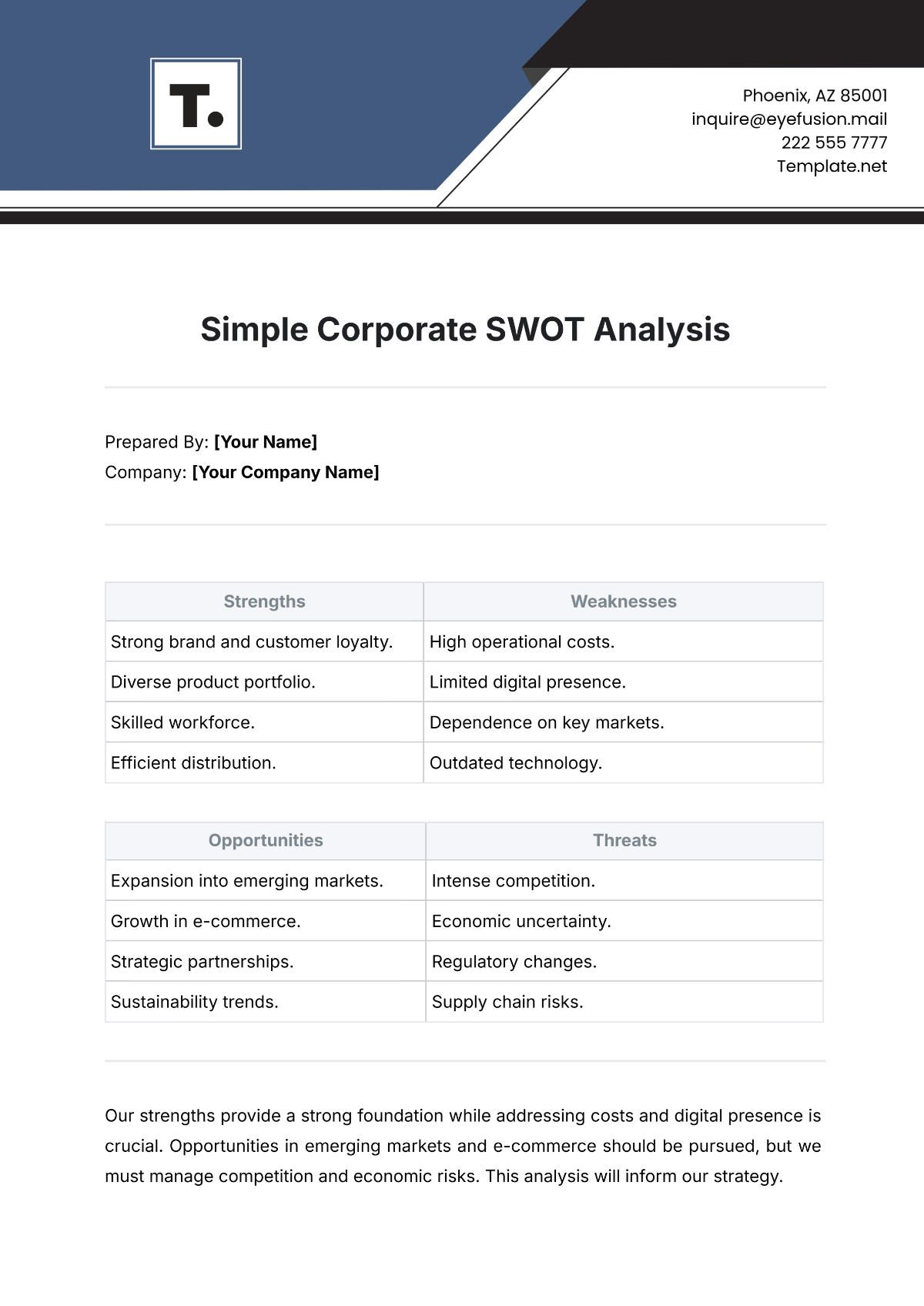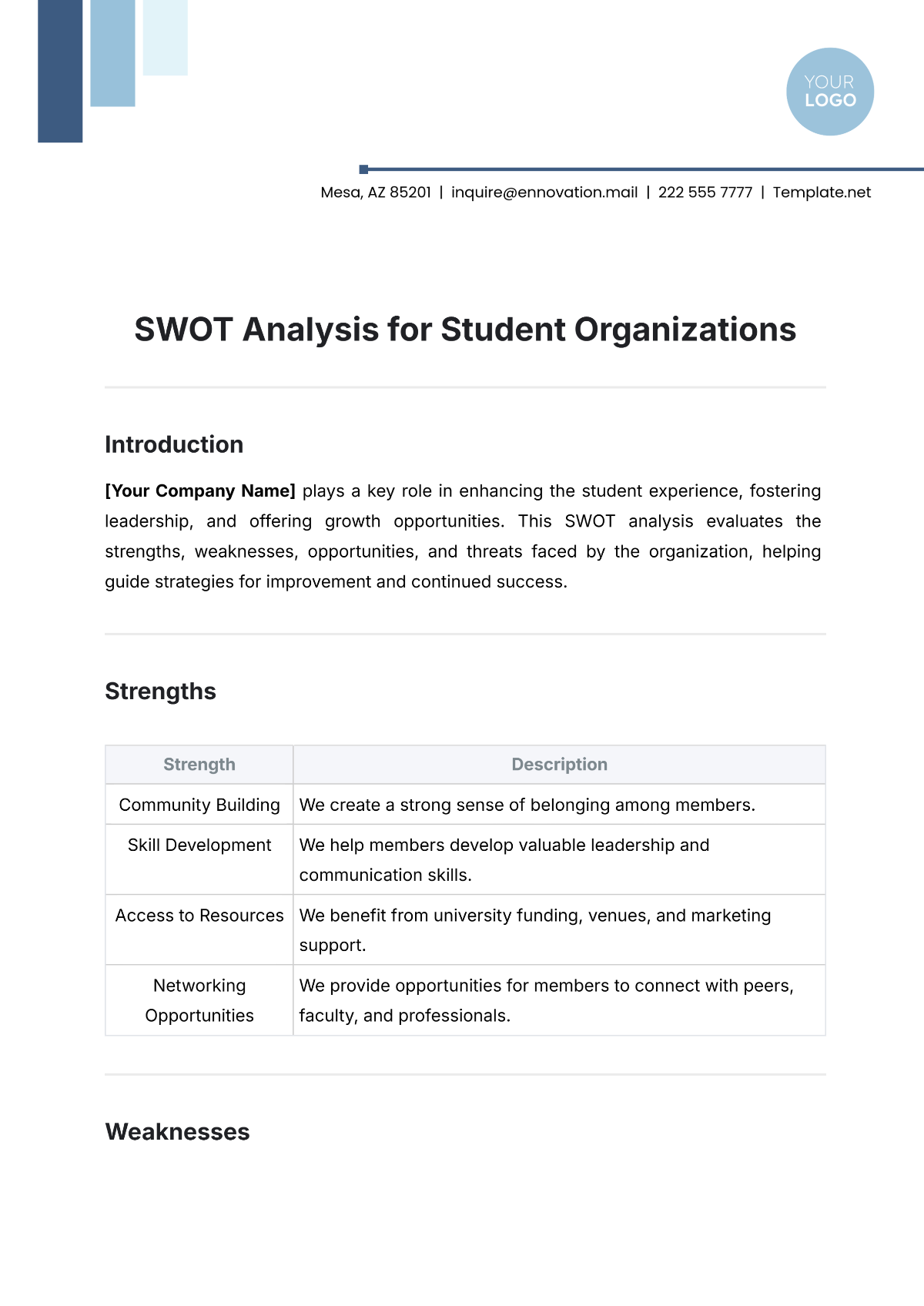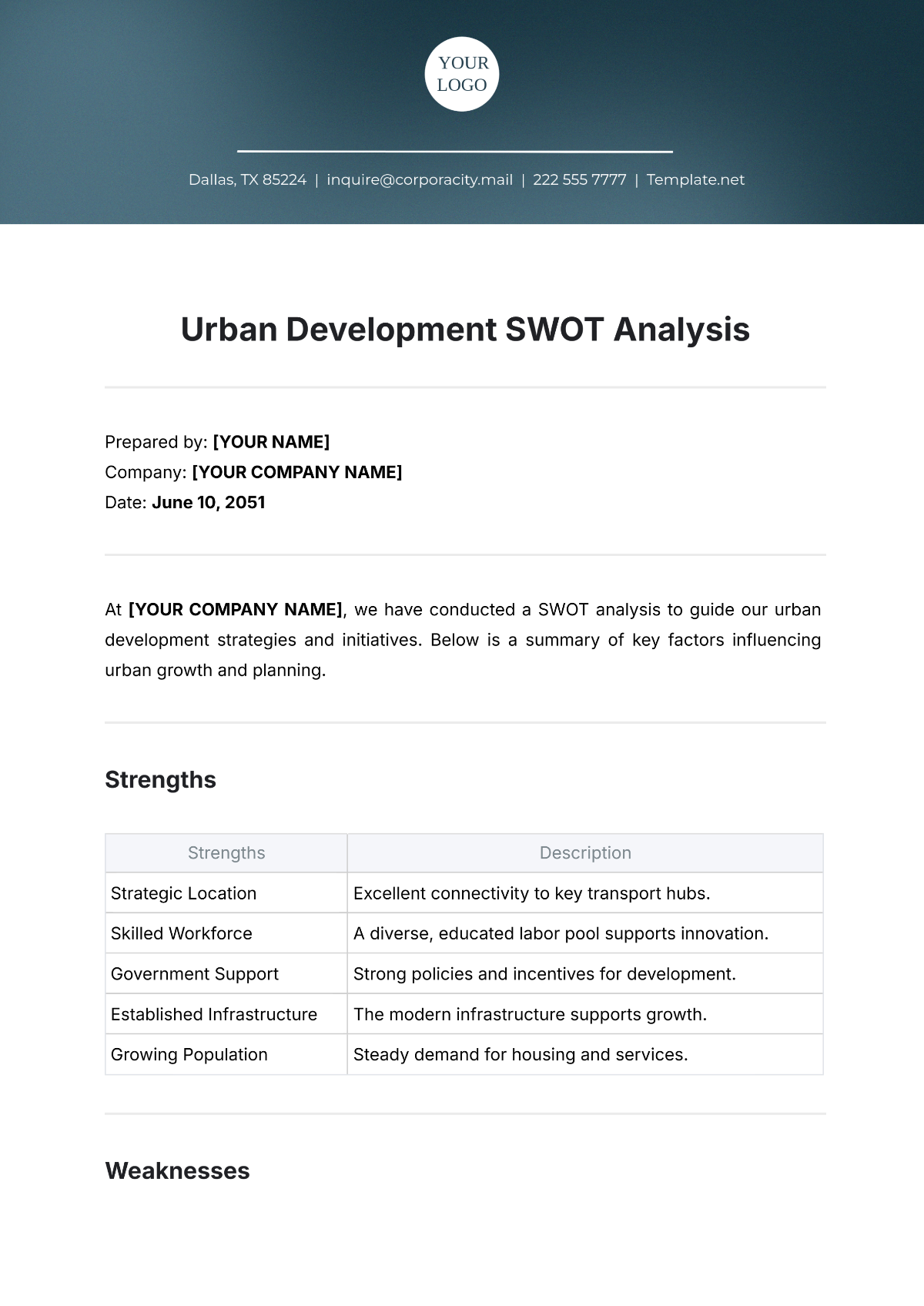Retail SWOT Analysis
Prepared By : | [Your Name] |
Department : | [Your Department] |
Company : | [Your Company Name] |
Company Address: | [Your Company Address] |
Company Social Media: | [Your Company Social Media] |
I. Introduction
A. Purpose
The purpose of this Retail SWOT Analysis is to identify the internal strengths and weaknesses, and external opportunities and threats for [Your Company Name]. This analysis will be used by company executives and strategic planners to make informed strategic decisions.
B. Company Overview
[Your Company Name] is a retail business specializing in consumer electronics and home appliances. Established in 2050, we have grown to 150 locations and employ 3,500 staff. Our mission is to provide innovative and high-quality products to enhance the daily lives of our customers.
C. Methodology
This analysis was conducted using data from internal reports, market research, and competitive analysis, gathered over the last five years. Data sources include sales reports, customer feedback, industry publications, and market trend studies.
II. Strengths
Strong Brand Recognition: [Your Company Name] is well-known for its high-quality products and exceptional customer service. Our brand is synonymous with innovation and reliability.
Wide Product Range: Offering a diverse array of consumer electronics, home appliances, and smart home devices, including exclusive product lines developed in collaboration with top tech companies.
Loyal Customer Base: Our loyalty program, Retail Rewards, has over 2 million active members, providing regular promotions, discounts, and personalized shopping experiences.
Strategic Locations: Stores are located in high-traffic urban centers and shopping malls, ensuring high visibility and foot traffic.
III. Weaknesses
High Operating Costs: High rental costs for prime locations and substantial payroll expenses. Utility bills and maintenance costs also contribute significantly to overall expenses. Below is the cost analysis breakdown:
Expense Category | Annual Cost (in $) | Percentage of Total Cost (%) |
|---|---|---|
Rent | 10,000,000 | 30% |
Payroll | 8,000,000 | 24% |
Utilities | 3,000,000 | 9% |
Maintenance | 2,500,000 | 7.5% |
Marketing | 4,500,000 | 13.5% |
Inventory Management | 6,000,000 | 18% |
Total | 34,000,000 | 100% |
Limited Online Presence: Our e-commerce platform accounts for only 15% of total sales, indicating a need for digital expansion and improved online marketing strategies.
Inventory Management Issues: Occasional overstock and stockouts have led to inefficiencies and increased operational costs. Need for a more robust inventory management system.
Dependence on Key Suppliers: Relying heavily on a few suppliers for our best-selling products makes us vulnerable to supply chain disruptions.
V. Opportunities
Market Expansion: Potential to enter emerging markets in Southeast Asia and Africa. These regions show significant economic growth and increasing consumer demand for electronics.
E-commerce Growth: Increasing investment in our online platform could boost sales and reach. Implementing a more user-friendly interface and mobile app to enhance customer experience.
Partnerships and Collaborations: Collaborating with tech companies to develop exclusive product lines, such as smart home devices that integrate with leading AI assistants.
Changing Consumer Trends: Growing demand for eco-friendly and sustainable products presents an opportunity to introduce green product lines and recycling programs.
VI. Market Expansion Strategy
Region | Key Opportunities | Action Plan |
|---|---|---|
Southeast Asia | High economic growth, rising middle-class | Establish local partnerships, open flagship stores |
Africa | Increasing urbanization, tech-savvy youth | Launch online platform, mobile-first strategy |
South America | Expanding e-commerce market | Localized marketing campaigns, regional warehouses |
Eastern Europe | Growing consumer electronics market | Strategic store openings, localized product offerings |
VII. Threats
Increased Competition: New entrants and existing competitors intensify their efforts in key markets. Competitors are investing heavily in technology and customer service enhancements.
Economic Downturns: Economic recessions can significantly impact consumer spending on non-essential items. This can lead to reduced sales and increased price sensitivity among consumers.
Regulatory Changes: New import tariffs and regulations affect product costs and pricing. Compliance with different regulations in international markets can be challenging.
Supply Chain Disruptions: Global supply chain issues cause delays and increased costs. Natural disasters, political instability, and pandemics can severely impact supply chain continuity.
Competitor Analysis
Competitor Name | Strengths | Weaknesses | Market Share (%) |
|---|---|---|---|
[Competitor 1] | Low prices, extensive product range | Limited customer service, fewer locations | 25% |
[Competitor 2] | Strong online presence, innovative products | High prices, niche market | 20% |
[Competitor 3] | Excellent customer service, strategic locations | Smaller product range, higher operating costs | 15% |
[Competitor 4] | Sustainable products, advanced technology | Limited physical stores, high prices | 10% |
VIII. Conclusion and Recommendations
A. Summary
This Retail SWOT Analysis highlights the key strengths, weaknesses, opportunities, and threats for [Your Company Name]. By leveraging strengths and opportunities while addressing weaknesses and threats, [Your Company Name] can strategically position itself for sustained growth and success.
B. Recommendations
Enhance Online Presence
Invest in digital marketing and improve the user experience on our e-commerce platform. Introduce a mobile app to increase accessibility and customer engagement.
Optimize Cost Management
Implement cost-saving measures in operations, such as energy-efficient practices and renegotiating rental agreements. Streamline the supply chain to reduce costs.
Expand Market Reach
Develop strategies for entering and succeeding in new international markets. Focus on regions with high growth potential and establish a strong local presence.
Strengthen Supply Chain
Diversify suppliers and invest in supply chain technologies to mitigate risks. Implement contingency plans for supply chain disruptions.













